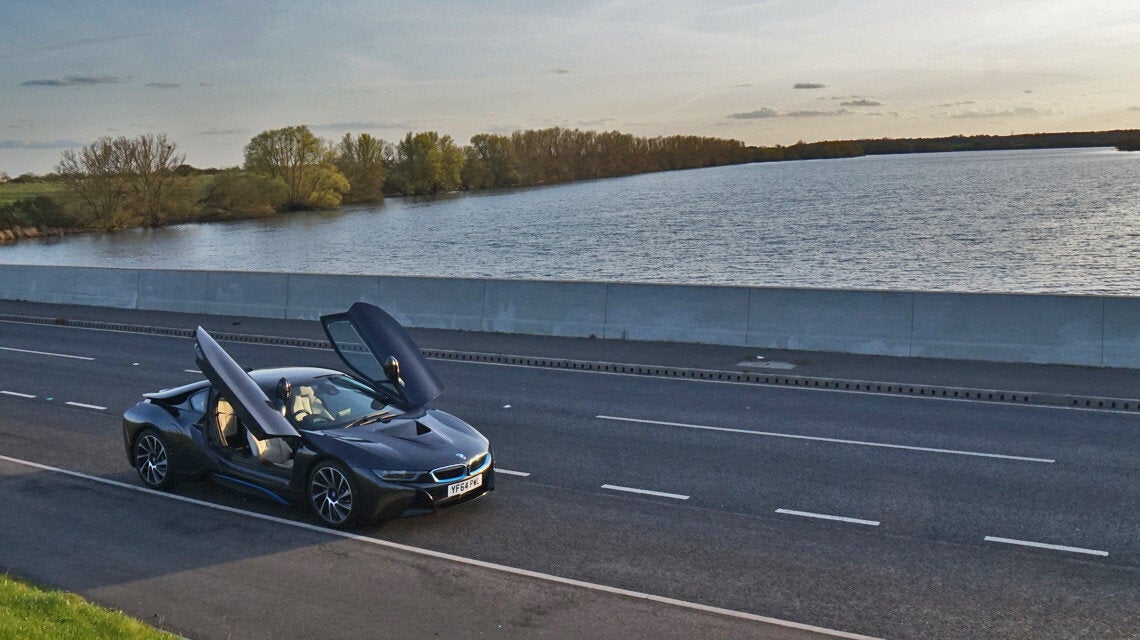The average car spends around 95 per cent of its life doing absolutely nothing.
Colchester is not your average town when it comes to cars though. Rated as one of the most car-dependant towns in the country, the UK's former capital takes that 95 per cent figure and politely scoffs at it.
Through a combination of bad planning and poor decisions my hometown has quietly become a network of ring roads, expertly leading you to the seven major car parks that lie within its old Roman walls.
It's not because Colchester's population hates walking, or cycling, it's simply that my it hasn't grown in such a way that either of those are particularly efficient ways of getting around.
So they drive, whether it's just down the road to grab fish and chips, or further afield to the other side of town to catch a film.
Why am I talking about Colchester? Well the connection is this, the BMW i8 is a car that also forces you to drive, but the difference is that it does it not because you have to, but because you'll want to, and it won't laugh at the environment while you're at it.
More experiment than actual road car, BMW hopes the i8 will help solve the problem that Colchester faces by becoming the textbook upon which cars can be built that'll allow us to drive without any of the accompanying guilt.
With that in mind, this isn't so much a review as more of an evaluation of the car's different features that BMW hope will shape its future cars.
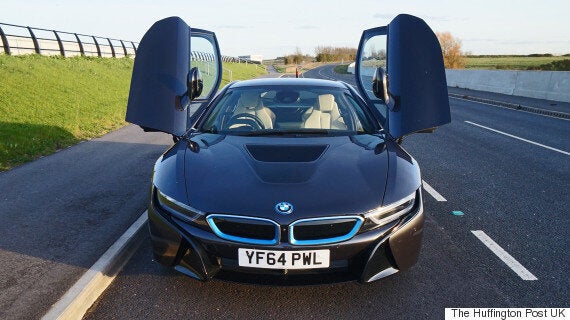
First up is appearance. In fact it's just about impossible to talk about anything else first. I haven't met a single person yet that doesn't immediately gawp at the sight of one on the road. It's like a science fiction movie prop, in the best possible way.
In the short weekend I spent driving it around there were a grand total of three near traffic jams and around 10 people sacrificing all common sense just so they could cross the road and take a picture. You'd need to be in a Bugatti or a Lamborghini to get that kind of attention and neither of those come with the added smugness of knowing that it costs a third of the price and practically plants seeds out of the exhaust.
That appearance isn't just to appease the more shallow-minded of us. Each of those design elements has been included to reduce drag. Those indicator stalks at the back drive the airflow around the back of the car and help drastically reduce drag.
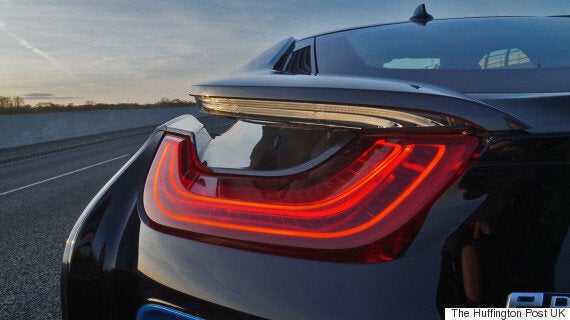
Having dihedral doors are -- if you'll believe it -- not just for looking cool either. Thanks to the carbon fibre structure they're 50 per cent lighter than conventional doors. They're also extremely handy when parking - if you can perfect a technique that doesn't involve falling out and immediately keying the car that you'd so carefully avoided in the first place.
There's more to the i8 than its pretty face, that functional design goes right down to its carbon fibre core.
Carbon fibre isn't cheap, and to use as much of it as BMW did on the i8, they had to completely rethink how they were going to manufacture the car in the first place.
Speaking to a spokesperson at BMW, it turns out this was much easier said than done. In fact you probably won't find a situation since the moon landing where someone stupidly said, 'ah it's no biggie', only to later discover that actually, it's quite an enormous 'biggie'.
For starters the sheer energy increase required at its manufacturing plants meant BMW would fail its EU energy efficiency targets. To combat that solution the company bought a hydroelectric dam.
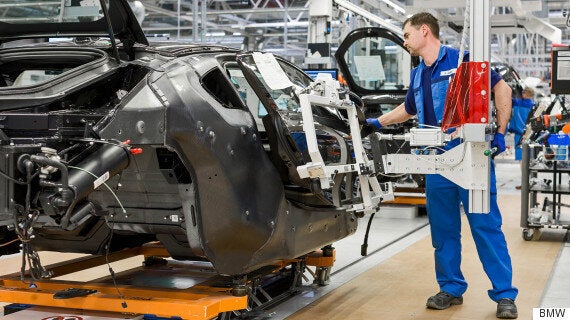
Why buy a dam? According to BMW it wasn't about short-term gains, it was about creating an work environment where they would be able to build cars five-ten years ahead of their time. Yes the short-term costs would be enormous, but in the long run it will hopefully secure the company's future long after fossil fuels die out.
READ MORE:
The BMW i8 is not that car of the future. Instead it's a starter, something to whet the appetite and gradually prepare us for the main course.
As such the i8 is a hybrid, combining both a small but powerful petrol engine, with a 129HP electric motor. When working together with the 1.5-litre turbocharged engine, both produce a combined power output of 357bhp. Enough to propel the i8 to 60mph in just 4.4secs all the way up to its 155mph top speed.
Don't be under any illusions, while the i8 may look like nothing more than a poster boy it is still at its heart a supercar, and those stats should help remind you.
The i8 comes with three distinct driving modes: Eco, Normal and Sport.
How does it drive? In Normal it drives like any other car, the suspension is gentle, steering response is sharp but lacking in any aggression while throttle response is brisk but civilised. It's great for inner-city driving or the motorways but aside from that I found myself almost always looking over at the Sport icon.
If I had one complaint it's that the difference between Normal and Sport is one of the most notable changes I've seen on a car. If Normal is a gentle floating donut around a water park, then Sport is cliff diving. It's as simple as that. The electric motor becomes permanently engaged, the noise increases (thanks to a combination of the car and some clever fake audio wizardry) and responsiveness is markedly improved. Most of all however, everything goes red.
The last time I drove something with such a split-personality was the Tesla Model S P85, a car that at the press of a button was able to open an inter-dimensional portal that had 60mph at the other end.
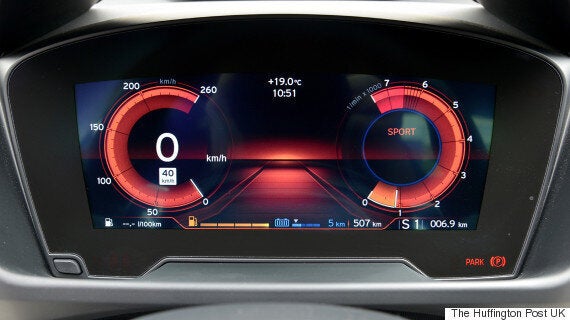
In terms of economy the i8 is unmatched in its class. While BMW's figures are frankly optimistic, the truth is that between 20-40mpg was the range I spent most of the weekend in. Despite being far below the official figures, it's hard to impress how significant that still is, especially for a supercar that looks like it was drawn up after a particularly drug-fuelled night of watching 'Tron'.
To achieve those figures you'll need to spend a lot of your time in Normal: It uses the electric engine at low speeds, recovers plenty of energy from braking and will only engage the full power of both engines if you floor it.
Finally at the complete other end of the spectrum is Eco. This disengages the petrol engine and uses just the electric motor, giving you a full-range of around 22-miles. That's obviously not great but it's more than enough for the school run in the morning, or a trip to the shops. You'll also have the satisfaction of knowing that your journey created around the same carbon footprint as a sustainably run eco-folk festival in Norfolk.
Keeping myself focused on the eco side of things was not easy, but thankfully car manufacturers know how to please the masses - by making an iPhone app. Featuring similar functionality to the app Tesla uses for its Model S, BMW's iRemote comes with a number of remote functions.
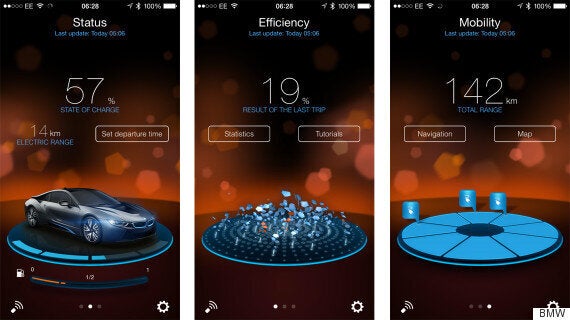
These include being able to turn the headlights on/off, pre-condition the car to the temperature you want and -- yes this is a problem for some of us -- see on a map exactly where the car is in case we've entirely forgotten where we parked it. It also comes with Apple Watch functionality, adding an element of the Dick Tracy that's hard to ignore.
The app isn't just about making you feel futuristic, it's also about genuinely changing the way you drive. By providing in-depth analysis of each of your past journeys the app can tell you just how much you really have been flooring it. The app might have been built for the i-range, but it's really for the cars that people will use around town every single day.
It's designed to make saving money easy, and intuitive. In the same way that a posture monitor knows when you've been slouching, the app knows when you've not been leaning off the accelerator. I'm not saying it'll make life boring, what it will do is change the way you approach driving, instead turning those occasional days when you do feel like putting your foot down into a rare treat.
The BMW i8 is an astonishing vehicle. In the four days I spent driving it around my hometown and the surrounding countryside it became clear that the i8 and the Model S both represent two very different approaches to the same outcome.
While Musk argues that we can have our green future now (albeit at the cost of range), BMW's car is a compromise, suggesting that while fossil fuels aren't going to disappear overnight, here's a way of speeding up the process.
It's not without its flaws: It's expensive, the fuel tank is pitifully small and the interior does not in any way do the exterior the justice it deserves.
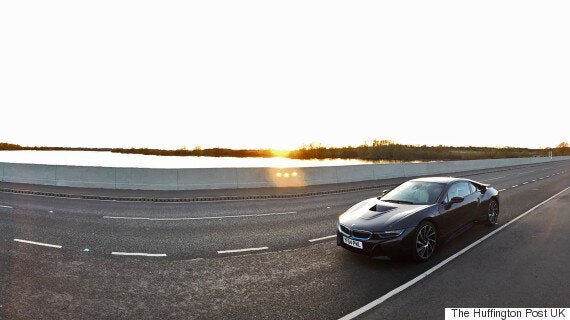
As we stated at the beginning though, the i8 isn't really a car. Instead it's a drivable blueprint for the cars that'll help solve Colchester's car reliance. From the lessons learnt in creating it, it'll spawn vehicles that'll let us keep driving without having to worry about the damage we're doing to the air around us.
As an open letter of intent then, the i8 is a giant billboard. BMW doesn't seem to care that the car cost an absolute fortune to make and that's the most refreshing thing. It's a decision that requires riding the storm to reap the rewards, and in this case, the storm couldn't be more enjoyable.
